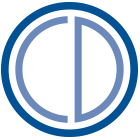Screening Measures
- Body Dysmorphic Disorder Questionnaire (BDDQ): This is a brief self-report screening measure for BDD; a follow-up in-person interview is needed to confirm the diagnosis. The BDDQ has high sensitivity (100%) and specificity (89-93%) for the BDD diagnosis in psychiatric, cosmetic surgery, and dermatology samples. To obtain this questionnaire, visit https://www.proemhealth.com/contact.
- Body Image Disturbance Questionnaire (BIDQ): This brief self-report measure is a slightly modified self-report version of the BDDQ that uses continuous response scaling. It has strong psychometric properties in a non-clinical population, but sensitivity and specificity data are needed. A follow-up in-person interview is needed to confirm the diagnosis.
Diagnostic Measures
- Structured Clinical Interview for DSM-5 (SCID): The SCID’s BDD module is a brief semi-structured clinician-administered measure.
- BDD Diagnostic Module: This brief semi-structured clinician-administered measure is similar to and predated the SCID. A DSM-5 version is available for both adults and youth. To obtain this measure, visit https://www.proemhealth.com/contact.
- Body Dysmorphic Disorder Examination (BDDE): This semi-structured interview is fairly lengthy, and is of limited usefulness for patients with more severe BDD symptoms. A self-report version has been used in some studies, but its psychometric properties have not been established.
Severity Measures
- BDD-YBOCS:This semi-structured rater-administered measure is similar to the Y-BOCS for OCD with the exception that it includes two additional items (insight and avoidance). All 12 items should be rated; it is not intended for use as a 10-item scale. It assesses BDD severity during the past week. Scale scores range from 0-48. The cutpoint for the presence of the BDD diagnosis is 20. It is intended for use only with people who have already been diagnosed with BDD (it should not be used to screen for or diagnose BDD). It is best for the BDD-YBOCS to be administered by a trained clinician or rater. To obtain this scale, visit https://www.proemhealth.com/contact.
- BDD-PSR: This brief measure provides a global rating of BDD severity. It maps onto DSM diagnostic criteria for BDD. The BDD-PSR is especially well suited for tracking BDD severity in longitudinal course of illness studies. It identifies full criteria BDD, BDD in partial remission, and BDD in full remission; thus, it is well suited for tracking remission and relapse of BDD over time.
- Body Dysmorphic Disorder Examination (BDDE): This measure (see above) also assesses BDD severity.
Insight Measures
- Brown Assessment of Beliefs Scale (BABS): This 7-item semi-structured rater-administered measure assesses insight/delusionality in BDD and other disorders that are characterized by false beliefs. It assesses insight/delusionality both dimensionally and categorically. Items assess conviction, perception of others’ views of the belief, explanation of differing views, fixity of the belief, attempts to disprove the belief, insight (whether the belief has a psychiatric/psychological explanation), and ideas/delusions of reference. To obtain this scale, visit https://www.proemhealth.com/contact.
- Overvalued Ideas Scale (OVIS): The OVIS measures the current severity and extent of overvalued ideas by considering their strength, reasonableness, fluctuation, accuracy, degree to which others hold the same beliefs, attribution, insight, and degree of resistance of the belief.
For more information about diagnosis and assessment, please see The Broken Mirror: Understanding and Treating Body Dysmorphic Disorder, by Katharine A. Phillips (Oxford University Press, 2005) and Body Dysmorphic Disorder: Advances in Research and Clinical Practice, by Katharine A. Phillips (Oxford University Press, 2017).
